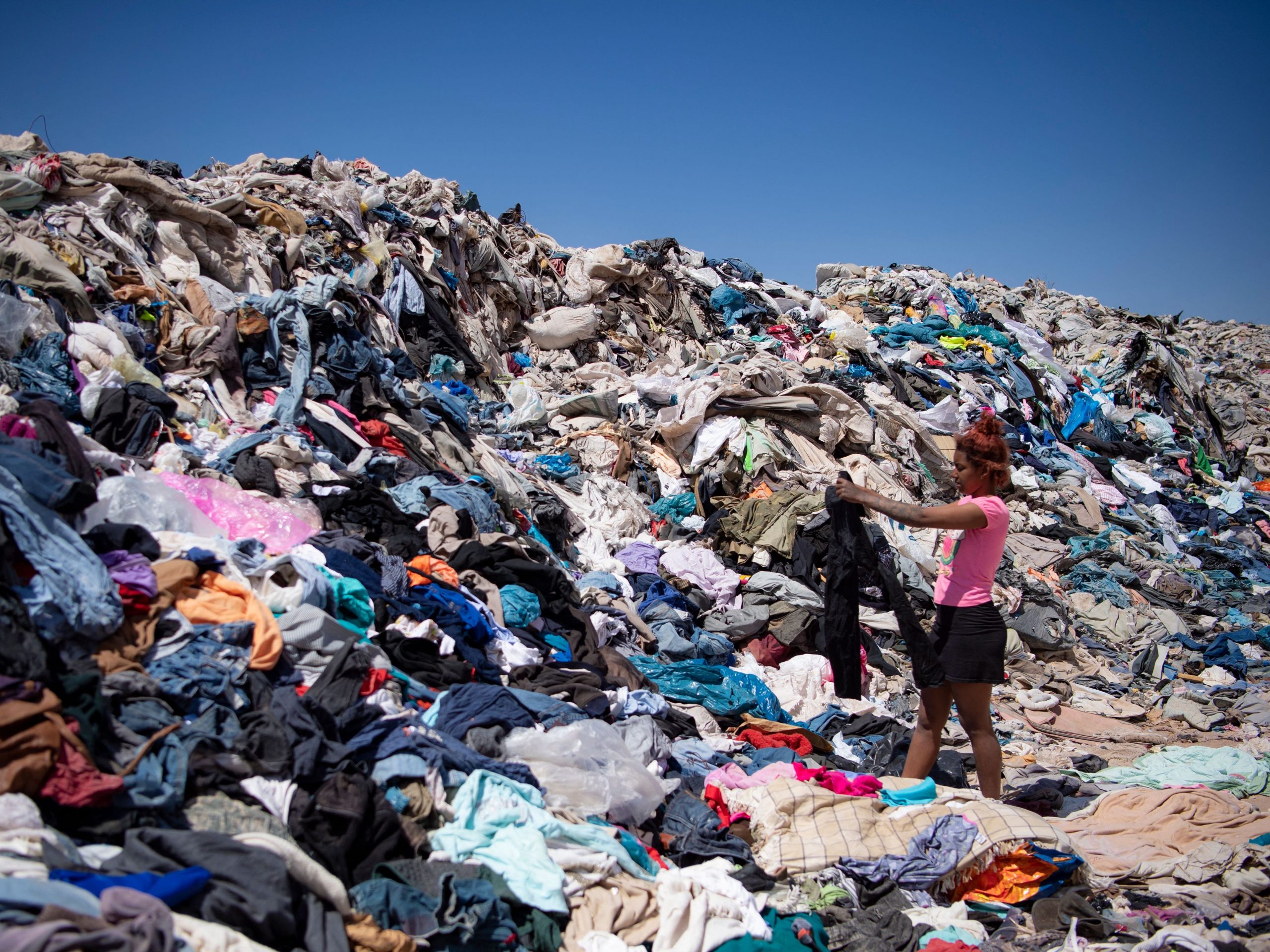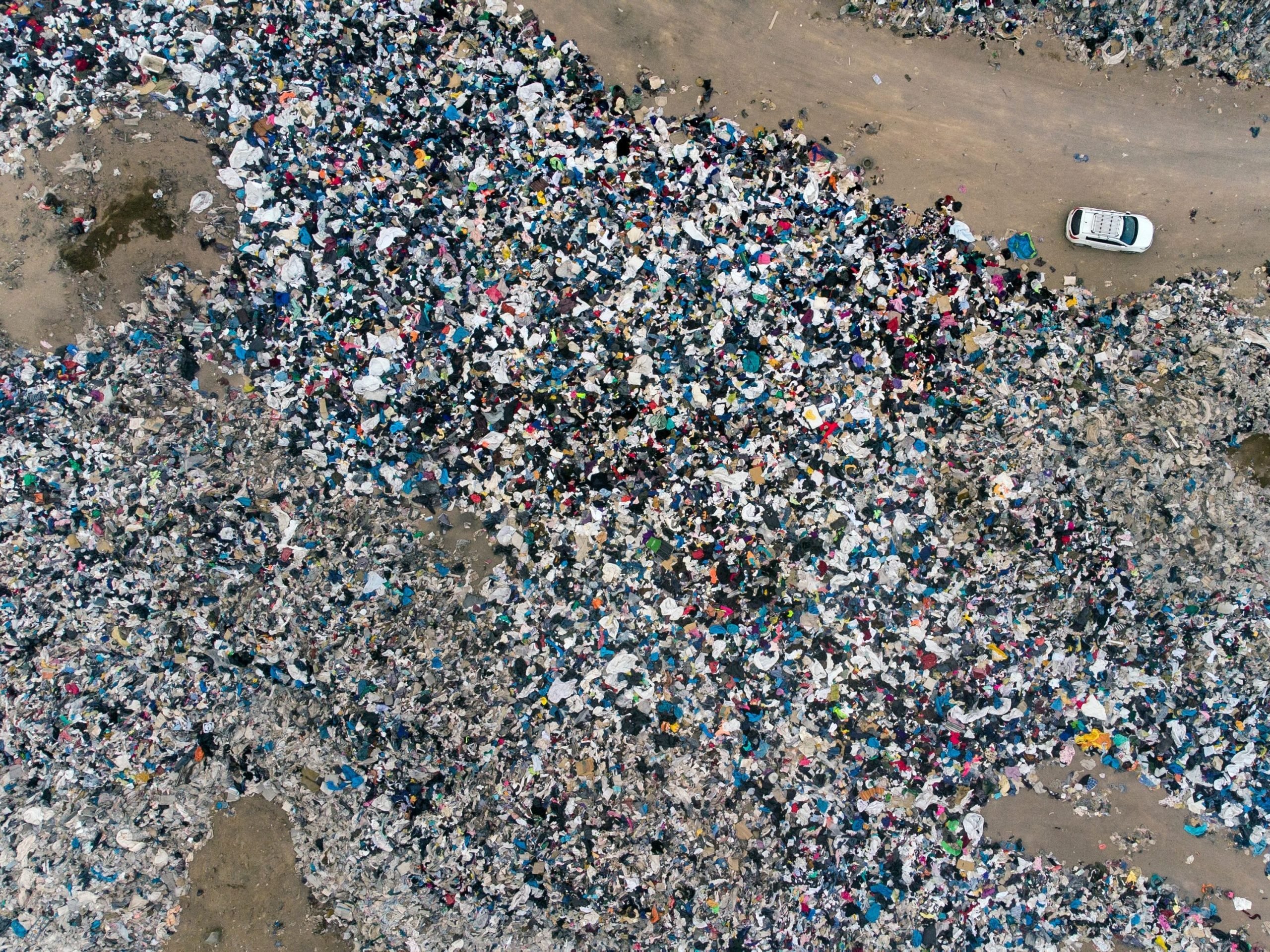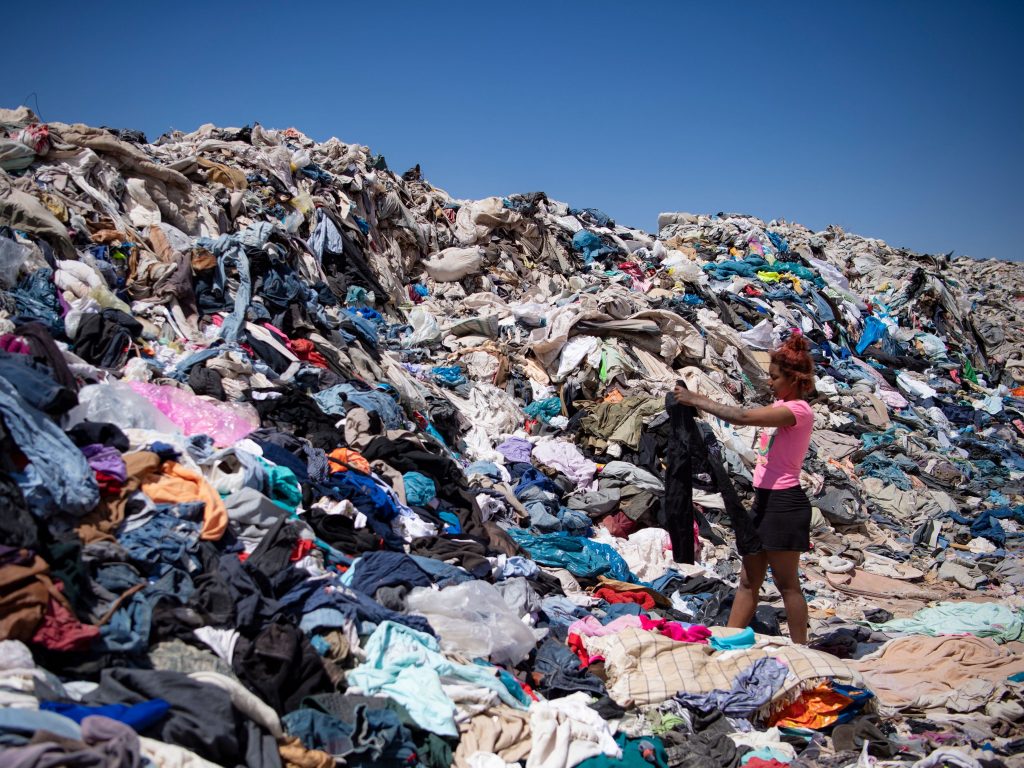
Martin Bernetti/AFP via Getty Images
- A huge heap of unworn clothing is piling up in Chile's Atacama desert.
- An estimated 39,000 tons of clothes that can't be sold in the US or Europe end up in Chile every year.
- The used clothes occupy a large stretch of the desert, blanketing sand dunes in a layer of discarded textiles.
Heaps of unworn clothes are being discarded in the Chilean desert, adding to a swiftly swelling graveyard of fast fashion lines past.
According to a report from the AFP, the massive mound of clothes consists of garments made in China and Bangladesh that make their way to stores in the US, Europe, and Asia. When the garments are not purchased, they are brought to Chile's Iquique port to be re-sold to other Latin American countries.
The AFP found that around 59,000 tons of clothing end up at the port in Chile every year. Of that amount, 39,000 tons are moved into landfills in the desert.
Alex Carreno, a former employee at the Iquique port's import section, told the AFP the clothing "arrives from all over the world." Carreno added that most of the clothes are later disposed of when the shipments can't be re-sold across Latin America.
The used clothes brought to the desert heaps for disposal have now blanketed an entire swathe of land in the Atacama desert in Alto Hospicio, Chile.

Martin Bernetti/ AFP via Getty Images
"The problem is that the clothing is not biodegradable and has chemical products, so it is not accepted in the municipal landfills," said Franklin Zepeda, founder of EcoFibra, a company that is trying to make use of the discarded clothing by making insulation panels out of them.
Zepeda, whose firm has been using textile waste to create its thermal and acoustic building insulators since 2018, told the AFP that he wanted to "stop being the problem and start being the solution."
Fast fashion, while affordable, is extremely harmful to the environment.
For one, the fashion industry accounts for 8 to 10% of the world's carbon emissions, per the UN. In 2018, the fashion industry was also found to consume more energy than the aviation and shipping industries combined. Researchers estimate that the equivalent of a garbage truck of clothes is burned and sent to a landfill every second.
And the rate at which consumers buy clothing is not slowing down. According to statistics from the Ellen McArthur Foundation, a UK-based think-tank and circular economy charity, clothing production doubled during the 15-year timeframe from 2004 to 2019. McKinsey also estimated that the average consumer purchased 60% more clothes in 2014 than they did in 2000.










